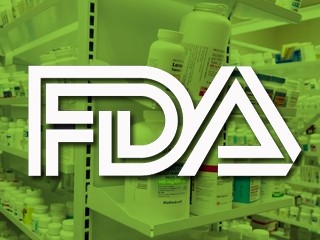US generic industry preps for GDUFA reauthorisation marathon

The first re-authorisation of the Generic Drug Use Fee Act (GDUFA) – which came into effect in 2012 – is generating considerable debate among manufacturers of active pharmaceutical ingredients (APIs) and finished generic drugs.
GDUFA came into force to help fund additional staff and resources to accelerate the approval of generics, which typically takes much longer than for branded medicines.
However, since implementation average approval times have actually lengthened from 31 months in fiscal year 2012 to 42 months in 2014, and the application backlog is said to be more than 4,000 and growing, according to the Generic Pharmaceutical Association (GPhA).
GPhA's communications director Steve Arnoff said the situation is "confounding" considering that fees under GDUFA have risen steadily since it was enacted – from $299m in fiscal 2013 to $318m in fiscal 2016. To make matters worse, "FDA still has $277m in unused funds from the generic industry that could be applied to site inspections or approvals."
ANDA, DMF prices go up
Under the new 2016 structure, the fee for an Abbreviated New Drug Application (ANDA) for a generic drug rises to $76,030 from $58,730, while drug master file (DMF) fees increase from $26,720 to $42,170.
Facility fees drop slightly however; for finished dosage forms the cost is $243,905 while for API plants it is $258,905, each down a few thousand dollars on last year.
John DiLoreto of the Bulk Pharmaceuticals Task Force (BPTF), part of Society of Chemical Manufacturers and Affiliates (SOCMA) industry body, commented that the fees disclosed this week were broadly in line with prior years, but reflect changes in the FDA's projections for services in the coming year.
The agency's figures for the number of facilities making active pharmaceutical ingredients (APIs) and finished dosage forms reveal considerable consolidation in the industry – and mean the fee pool has to be shared out between a smaller number of participants.
For instance, "in 2013 – the first year of the GDUFA programme – there were 447 facilities, but that figure is now 338," he said. Meanwhile, "the FDA's projected number of DMF applications has fallen from 701 last year to 453 in 2016," which explains the hefty increase.
For ANDA applications the picture is similar with a projection of just 1,005 filings - the lowest level since 2013 - causing a 30% increase in fees which is hard to swallow given the extending review times.
"We're all shaking our heads wondering why we are getting longer review periods than anticipated," said DiLoreto. "Once we get down to brass tacks with the FDA - the formal negotiations will start in the next couple of months - we should get some answers on what is happening."
Arnoff also expressed the hope that the FDA will improve communication between the agency and manufacturers noting that "without more meaningful transparent correspondence, generic manufacturers are unable to plan for the critical steps in the market entry processes."
‘Unintended consequences’
Meanwhile, there are a number of "unintended consequences" of the way GDUFA works at present that need to be addressed, according to SOCMA.
For example, the lengthening ANDA timelines mean that under the current scheme some facility operators will have to pay facility charges for multiple years while they wait for the application to be approved.
DiLoreto gave the hypothetical example of a manufacturer which makes an API and wants to produce a finished dosage form of a drug on the drug shortage list. At present the firm could have to pay facility fees of almost a million dollars waiting for approval of a product that might in some cases make just half a million dollars a year.
The system is certainly a disincentive, particularly if we want to take drugs off the shortage list, he said.
He also pointed out that as GDUFA has led to the introduction of a risk-based inspection system for Good Manufacturing Practice (GMP) compliance, the FDA's desire to monitor overseas facilities has increased the intervals between inspections for domestic API facilities in the US.
Rather than inspections occurring every two or three years, there may now be an interval of four years or more. But when a US manufacturer wants to ship a product to Europe, the European buyer asks for a GMP certificate that shows it has been inspected within the last three years, according to DiLoreto.
"That introduces a conflict, particularly because Certificates of Pharmaceutical Product (CPP) awarded by the FDA to US companies exporting products to foreign countries – which are being used in place of the GMP – are not widely accepted by buyers in the EU and other parts of the world."
The FDA held a public meeting in June to discuss the reauthorisation of GDUFA and negotiations will kick off in September with a view to reaching an agreement by next spring.
Thereafter legislation will be drafted that will have to be approved by Congress in order to be implemented by October 1, 2016.







